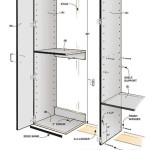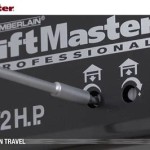Replacing A Torsion Spring On A Garage Door
Garage door torsion springs are critical components responsible for counterbalancing the weight of the garage door, enabling smooth and controlled opening and closing. These springs, located above the garage door opening, operate under high tension and are subject to considerable stress with each use. Over time, this stress can lead to fatigue and eventual failure, necessitating replacement. Replacing a torsion spring is a complex and potentially dangerous task that requires careful planning, proper tools, and a thorough understanding of the spring system. Due to the inherent risks associated with handling high-tension springs, it is strongly advised that this task be performed by a qualified garage door technician. However, for individuals with appropriate experience and a commitment to safety, this article provides a detailed guide to the replacement process.
Before embarking on a torsion spring replacement, it is essential to accurately identify the correct replacement spring. Garage door springs are not universal; they are specifically sized and rated to match the weight and dimensions of the door. Using an incorrect spring can lead to improper door operation, premature wear, and potentially dangerous situations. Information necessary for spring identification includes the wire size, inside diameter, and length of the existing spring. This information is typically found stamped on the cone of the spring or can be determined by careful measurements.
It is crucial to understand that garage door springs operate in pairs. If one spring breaks, the other spring is likely nearing the end of its lifespan. Therefore, it is strongly recommended to replace both torsion springs simultaneously, even if only one is broken. Replacing both springs ensures balanced operation and prevents the inconvenience and expense of having to replace the second spring shortly after replacing the first.
The following sections detail the steps involved in safely and effectively replacing garage door torsion springs. Please remember that safety is paramount, and if at any point the process seems too complex or uncomfortable, the best course of action is to contact a professional garage door technician.
Gathering Necessary Tools and Materials
Prior to initiating the replacement process, ensure that all necessary tools and materials are readily available. This preparation will help streamline the procedure and minimize potential delays or interruptions. Essential items include:
Correct Replacement Torsion Springs: As previously emphasized, selecting the correct springs is paramount. Verify that the springs match the specifications of the existing springs, including wire size, inside diameter, and length. Ensure to purchase two springs.
Winding Bars: These specialized tools are used to wind and unwind the torsion springs. Winding bars are typically made of steel and have a specific diameter that corresponds to the winding cone of the spring. Using the wrong size winding bar can damage the cone or lead to the bar slipping, which can cause serious injury. It is recommended to have two winding bars of the correct size.
Safety Glasses: Eye protection is crucial to prevent debris or fragments from entering the eyes during the spring replacement process.
Work Gloves: Gloves provide a better grip on the winding bars and help protect hands from sharp edges or rough surfaces.
Adjustable Wrench: An adjustable wrench is used to loosen and tighten the set screws that secure the spring to the torsion tube.
Vice Grips or Locking Pliers: These are used to clamp the torsion tube to prevent it from rotating while the springs are being adjusted.
Ladder: A sturdy ladder is required to reach the torsion springs, which are typically located above the garage door.
Hammer: A hammer may be needed to tap the winding bars into place.
Marker or Tape: A marker or tape is used to mark the position of the springs and cables before disassembly.
Garage Door Lubricant: Lubricating the moving parts of the garage door system, including the hinges, rollers, and tracks, can improve its performance and prolong its lifespan.
Safely Releasing Tension from the Old Springs
Releasing the tension from the old torsion springs is the most critical and potentially dangerous step in the replacement process. Extreme caution is required to prevent injury. The following steps outline the procedure for safely unwinding the springs:
Secure the Garage Door: Before proceeding, ensure that the garage door is fully closed and securely clamped in place to prevent it from unexpectedly opening. This can be accomplished by using C-clamps or locking pliers to clamp the door to the tracks. Disconnecting the garage door opener is also recommended.
Insert the First Winding Bar: Insert one winding bar into the bottom hole of the winding cone on the spring. Hold the winding bar firmly and ensure it is securely seated.
Loosen the Set Screws: Using an adjustable wrench, loosen the set screws that secure the winding cone to the torsion tube. Do not completely remove the set screws; simply loosen them enough to allow the spring to unwind.
Unwind the Spring: Carefully and slowly begin to unwind the spring by pushing upward on the winding bar. As the spring unwinds, insert the second winding bar into the next available hole in the winding cone. Maintain a firm grip on both winding bars at all times. Continue unwinding the spring in small increments, alternating between the two winding bars, until all the tension has been released. It is important to maintain control of the spring at all times, preventing it from snapping back suddenly.
Repeat for the Second Spring: Repeat the process for the second spring, ensuring that all tension is completely released from both springs before proceeding to the next step.
Installing the New Torsion Springs
With the old springs safely unwound and the tension released, the next step is to remove them and install the new torsion springs. The following steps detail the installation process:
Loosen Cable Drum Set Screws: Loosen the set screws on the cable drums, located at the ends of the torsion tube. These drums hold the lift cables that connect to the bottom of the garage door.
Disconnect the Lift Cables: Carefully detach the lift cables from the drums. Note the exact configuration of the cables and how they are attached to the drums for reassembly. Marking the cable positions with tape or a marker can be helpful.
Remove the Old Springs: Slide the old springs off the torsion tube. If necessary, use a hammer and a block of wood to gently tap the springs off the tube. Be careful not to damage the torsion tube.
Install the New Springs: Slide the new torsion springs onto the torsion tube, ensuring that they are oriented correctly. The spring with the red winding cone is typically installed on the right side of the door, and the spring with the black winding cone is installed on the left side. The direction of the spring winding (left-wound or right-wound) must match the original springs. The winding cones should face outward, away from the center bracket.
Reattach the Lift Cables: Reattach the lift cables to the cable drums, ensuring that they are properly aligned and secured. Refer to the markings made during disassembly to ensure correct positioning. Tighten the set screws on the cable drums.
Wind the New Springs: This is the reverse of the unwinding process, but requires even more attention to detail. Insert one winding bar into the winding cone and begin winding the spring. The number of turns required will depend on the height of the garage door. A general guideline is to wind the spring one full turn for each foot of door height, plus an additional quarter turn. For example, a seven-foot door would require seven and a quarter turns. Maintain a firm grip on the winding bar and use the second winding bar to advance the spring in small increments.
Set the Spring Tension: Once the spring has been wound to the correct number of turns, tighten the set screws on the winding cone. Ensure that the set screws are securely tightened to prevent the spring from unwinding. It is crucial to use the correct torque when tightening the set screws. Over-tightening can damage the winding cone, while under-tightening can allow the screws to loosen, causing the spring to slip.
Repeat for the Second Spring: Repeat the winding and tensioning process for the second spring, ensuring that both springs are wound equally. Uneven tension can cause the door to operate unevenly.
Test the Door Balance: After winding both springs, it is essential to test the door's balance. Disconnect the garage door opener and manually lift the door halfway. If the door stays in place, the springs are properly balanced. If the door drifts up or down, adjustments to the spring tension may be necessary. Make small adjustments to the spring tension, one-quarter turn at a time, until the door is properly balanced.
Final Inspection and Lubrication: Once the door is balanced, perform a final inspection of the entire garage door system. Check the condition of the cables, rollers, hinges, and tracks. Lubricate all moving parts with a garage door lubricant to ensure smooth and quiet operation. Reconnect the garage door opener and test the door's operation.

How To Install A Single Torsion Spring Assembly

Simple Tutorial On Garage Door Spring Replacement

Garage Door Torsion Spring Replacement How To Youtube

Single Spring To A Pair Garage Door Torsion Springs

Diy Garage Door Torsion Spring Replacement A1 Experts

How To Replace Broken Torsion Springs Garage Door Spring Replacement Diy

How To Safely Replace Garage Door Springs Save Hundreds

Spring Repair And Replacement Habprogaragedoors Com

Average Garage Spring Door Replacement Cost Forbes Home

5 Essential Safety Tips When Repairing Garage Door Springs Champion Repair








